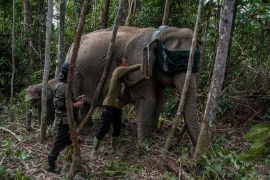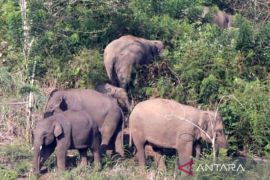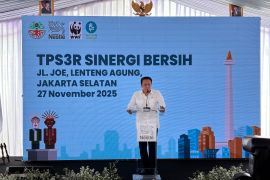Director General of Natural Resources and Ecosystem Conservation of the ministry, Satyawan Pudyatmoko, stated here on Tuesday that the survey is an important starting point in the wildlife management program, as it may provide valid data on the big cat's population.
"The basic data (gathered from the survey) is very important for developing the conservation program," Pudyatmoko stated at the event kick-off of the Java Island-Wide Leopard Survey (JWLS) in Jakarta.
Valid data regarding the number of Javan leopards and their whereabouts will provide a real picture of the existing condition as well as help to identify challenges in each landscape.
The survey will be using 600 surveillance cameras installed by eight joint field survey teams covering 1,160 observation stations in 21 landscapes, including 10 national parks, 24 nature reserve areas, and 55 other forest areas.
Related news: Deforestation pushing Javan leopards to wander into human settlements
The team is expected to obtain data of the Javan leopard population and its prey preferences, as well as those of the terrestrial biodiversity and its distribution throughout the remaining wildlife habitats on Java Island.
The collected data will be used to update the Javan Leopard Conservation Strategy and Action Plan document.
The Javan leopard is an endemic animal to the island of Java and included in the list of species on the IUCN Red List that are threatened with extinction.
The Indonesian SINTAS Foundation estimated at least 319 Javanese leopards in the wild.
Related news: Rare Javan leopard spotted in Bromo Semeru National Park
Related news: Dozens of Javan leopards found to inhabit Nusakambangan Island
Translator: Aditya Eko Sigit Wicaksono
Editor: Yuni Arisandy Sinaga
Copyright © ANTARA 2024












